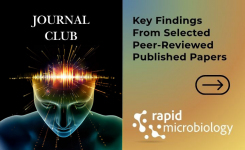Why This Matters:
- Whooping cough remains a serious public health concern even in countries with high vaccine coverage.
- Those most at risk for severe morbidity and mortality include infants, pregnant women, the elderly, and people with immuno-compromised status or chronic airway diseases.
- Since 2012, China has exclusively used acellular pertussis (AP) vaccines to manage the reactogenicity observed when vaccinating with vaccines composed of whole cell antigen.
- Note: acelllar pertussis is the same antigen type used in the TDaP vaccine. However, AP vaccines are known to induce shorter-lasting immunity than cellular-based vaccines.
- Starting around 2016, despite high vaccine coverage (>97%), pertussis cases have increased substantially in Shanghai.
- Macrolides are first line therapy for B. pertussis infections; increasing resistance undermines treatment efficacy and containment.
- The study links the rise of resistance not only to antibiotic selection but also to vaccine driven pathogen evolution (e.g., ptxP3 lineage expansion) — meaning that public health strategies should consider both antimicrobial and immunisation dynamics.
- Global spread of resistant clones makes coordinated global surveillance essential to control.
Key Findings: Xu and colleagues (2025) performed genomic surveillance of 178 B. pertussis isolates collected in Shanghai from 2018–2024 and integrated this with 1,596 publicly available global genomes to examine the dynamics of macrolide resistance - defined by a specific 23S rRNA A2047G mutation.
- In Shanghai, macrolide resistance in B. pertussis isolates dramatically increased from ≤ 50% pre-2020 to nearly 100 % post 2020, coinciding with the dominance of the MT28 ptxP3 MRBP or “ptxP3” lineage defined by the mutation that confers resistance to macrolides.
- This resistant ptxP3 lineage rapidly dominated post 2020 (61.7 % of isolates) and was disproportionately represented in older age groups (37 months to 18 years) compared to 70 % of cases occurring in infants ≤36 months pre-2020.
- Phylogenetic analysis of 178 local + 1,596 global genomes revealed two major lineages (ptxP1 vs ptxP3) and identified the resistant lineage “ptxP3” in France, Japan, and the US in 2024, suggesting international transmission.
Bigger Picture: This work underscores that control of whooping cough is becoming a multifactorial challenge in which vaccine strategy, pathogen evolution, and antimicrobial resistance appear to intersect. For epidemiologists, clinicians, and laboratory scientists, several implications emerge:
- Surveillance programs should simultaneously track macrolide-resistant clones and antigen-variant lineages to understand how they co-circulate and evolve.
- Vaccination policy may need to account for how antigenic drift interacts with the emergence of resistant strains, rather than treating these as independent phenomena.
- Infection prevention and antimicrobial stewardship should anticipate an era in which first-line macrolide therapy becomes less reliable, requiring contingency treatment pathways.
- Global genomic coordination will be essential to detect and respond to cross-border dissemination of high-risk resistant lineages.
Although the study demonstrates an association, the causal link between a vaccine change (from cellular to acellular) and expansion of resistant lineages remains inferential. Further work is needed to determine whether vaccine-driven shifts - such as expansion of the ptxP3 lineage - created ecological space for resistant clones through immune escape, altered fitness under acellular vaccine pressure, or other mechanisms. Ultimately, managing antibiotic-resistant B. pertussis may require integrated strategies that combine optimized vaccination, rapid diagnostics, antimicrobial stewardship, and global genomic surveillance - not isolated interventions.
(Image Credit: iStock/Dr_Microbe)
References:
- Xu et al. (2025) Genomic Surveillance Reveals Global Spread of Macrolide-Resistant Bordetella pertussis Linked to Vaccine Changes. Journal of Clinical Microbiology, e0106425.





















